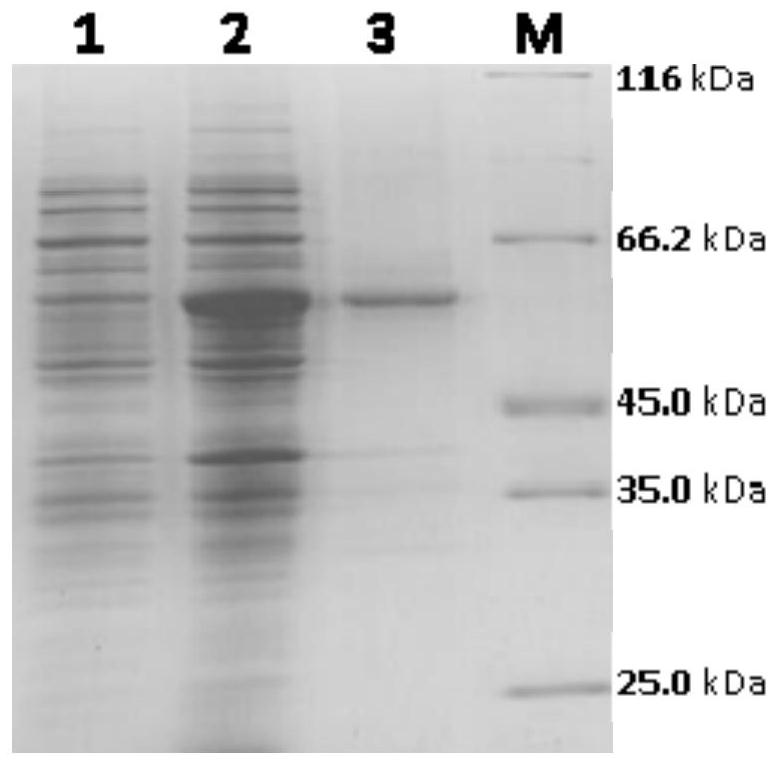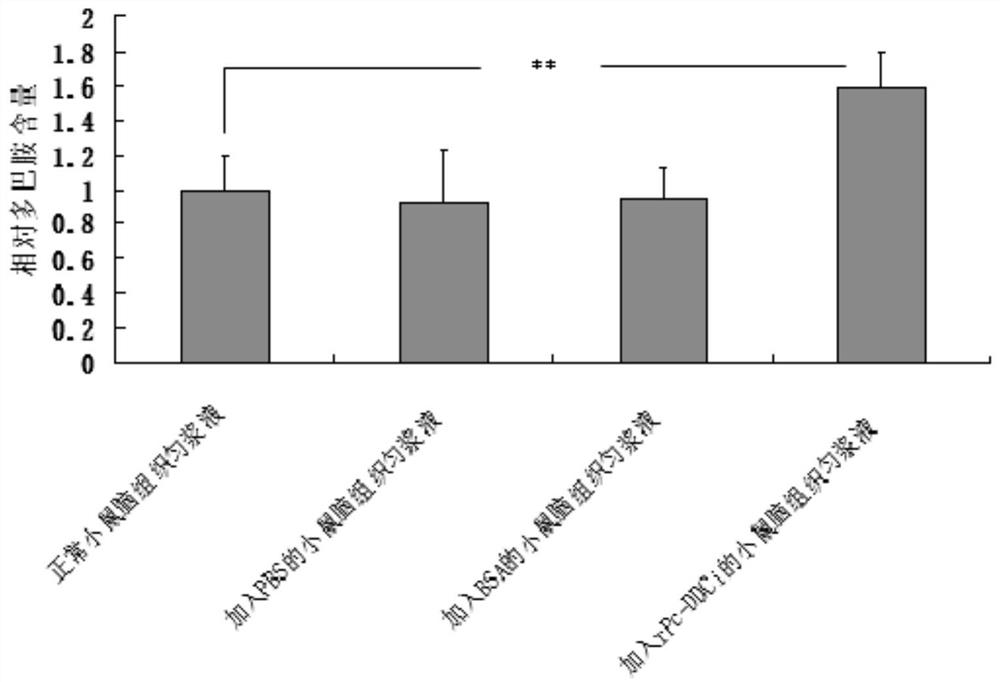A dopa decarboxylase homologue with strong catalytic activity and its preparation and application
A technology of dopa decarboxylase and homologues, applied in the field of molecular biology, can solve the problems of developmental delay, cognitive impairment, inability to resist external physical and pathogenic attacks, etc.
- Summary
- Abstract
- Description
- Claims
- Application Information
AI Technical Summary
Problems solved by technology
Method used
Image
Examples
Embodiment 1
[0027] Embodiment 1 Preparation of recombinant Procambarus clarkii dopa decarboxylase homologue
[0028] (1) The total RNA of the mixed tissue samples of Procambarus clarkii hepatopancreas, gills and intestines was extracted by using the animal total RNA extraction kit, and the total RNA samples of the mixed tissues of Procambarus clarkii were obtained.
[0029] (2) Using the total RNA sample of Procambarus clarkii obtained in step (1) as a template, using the specific primer 5'-CTACTGCAAAAGCGGGAG-3' as the back primer of the reverse transcription synthesis reaction, using a one-step RT-PCR amplification kit The reverse transcription synthesis of cDNA was carried out to obtain the cDNA samples of mixed tissue samples of Procambarus clarkii.
[0030] (3) Design and amplify the front and back primers Pc-ddc-i-F and Pc-ddc-i-R of the expression fragment (mature peptide) of the Pc-ddc-i coding region of the Procambarus clarkii homologue gene Pc-ddc-i:
[0031] Pc-ddc-i-F: 5′-tact...
Embodiment 2
[0040] Example 2 Experiment of the Catalytic Activity in Vitro of Recombinant Procambarus clarkii Dopa Decarboxylase Homologue rPc-DDCi
[0041] The concentration obtained in Example 1 was 200 μg·mL -1 The objective recombinant protein rPc-DDCi was used to catalyze the conversion of levodopa to dopamine in vitro. First, make a standard curve of dopamine concentration: prepare a set of dopamine standard solutions with concentrations of 1000, 333.33, 111.11, 37.04, and 12.35 pg / mL, and use a microplate reader to measure the absorbance at a wavelength of 450 nm. Afterwards, the absorbance value was used as the abscissa, and the logarithm of the concentration value was used as the ordinate to make a standard curve of absorbance versus dopamine concentration. Afterwards, the experiment of the target recombinant protein rPc-DDCi catalyzing levodopa was carried out: ① Take 0.591 g of levodopa and 0.0106 g of pyridoxal phosphate, and dissolve them in 100 mL of PBS. ②Adjust the pH to...
Embodiment 3
[0043] Example 3 The Experiment of Recombinant Procambarus clarkii Dopa Decarboxylase Homologue rPc-DDCi to Promote Hemocyte Encapsulation Activity in Vitro
[0044] The concentration obtained in Example 1 was 200 μg·mL -1 The purpose of the recombinant protein rPc-DDCi is to carry out the detection experiment on the hemocyte encapsulation activity of Procambarus clarkii in vitro. The first step is to process the agarose microspheres: draw 200 μL of agarose microspheres from the His-tag gel column into a 1.5 mL sterilized centrifuge tube, then add 1 mL of 1×PBS, and then turn it upside down or vortex Wash for 5-10 min, then centrifuge at 1500 rpm for 1 min. Repeat the above steps 4 times. The second step is to dilute the agarose microspheres: resuspend the treated agarose microspheres with 1mL 1×PBS, take a drop of the respinned microsphere liquid and place it on a glass slide, and observe the microspheres under a 40X microscope. If the concentration of microspheres is too ...
PUM
| Property | Measurement | Unit |
|---|---|---|
| absorbance | aaaaa | aaaaa |
Abstract
Description
Claims
Application Information
 Login to View More
Login to View More - R&D
- Intellectual Property
- Life Sciences
- Materials
- Tech Scout
- Unparalleled Data Quality
- Higher Quality Content
- 60% Fewer Hallucinations
Browse by: Latest US Patents, China's latest patents, Technical Efficacy Thesaurus, Application Domain, Technology Topic, Popular Technical Reports.
© 2025 PatSnap. All rights reserved.Legal|Privacy policy|Modern Slavery Act Transparency Statement|Sitemap|About US| Contact US: help@patsnap.com



